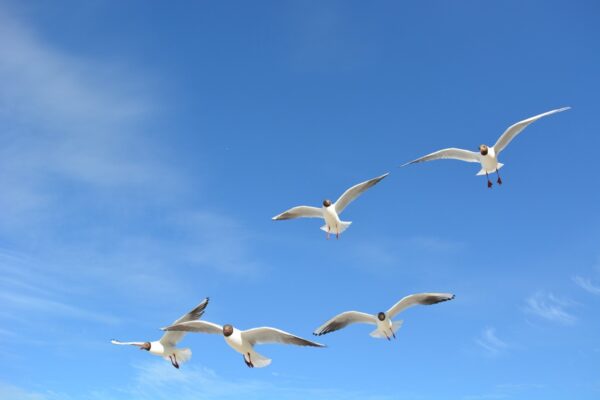English seabird populations are in decline. Breeding populations have declined by at least 20-30% since the early 1990s and without intervention these internationally important seabird populations will continue to decline. The same can be said across the UK: the latest figures from the Seabirds Count (2015-2021) shows almost 62% of seabird species in decline across the UK and declines across 70% of species in Scotland.
England’s cliffs, beaches, marshes and offshore islands provide nest sites for around 20 species, including charismatic and iconic birds such as Atlantic puffins and northern gannets. The nutrient-rich seas contain various small fish which seabirds can prey upon. And the shallow, often sandy, nearshore waters support over-wintering ‘marine waterbirds’ including seaducks like common eiders, and various species of divers (also known as loons). Seabirds are important – not only in themselves but as an indication of the health of the marine environment, write Dr Alex Banks & Nick Williams of Natural England in a post to mark the launch of a new initiative.
Photo: Vilnis Husko
Seabird Conservation and Recovery Pathway
The recently launched England Seabird Conservation and Recovery Pathway (ESCaRP) provides a framework document outlining the needs of seabirds. Species for which England is especially important, such as little terns, black-headed gulls and European shags, are decreasing; others, such as black-legged kittiwakes and roseate terns, are apparently more stable, but at much lower levels than in the past.
ESCaRP is essentially a “How To” guide for recovering England’s seabirds, says Samuel Wrobel of RSPB, writing on the organisation’s website. England’s colonies have been assessed for their sensitivity and vulnerability to a series of pressures for the past few years, resulting in a comprehensive plan outlining the measures intended to drive recovery. England’s plan will focus on 4 key areas: feeding, measures focusing on prey availability and safe access to foraging sites; breeding, safeguarding the colony sites; surviving, reducing impacts from activities such as fishing and offshore wind development; and knowledge, ensuring feedback loops are in place to continuously monitor, measure and improve measures.
What is ESCaRP?
ESCaRP is a set of 74 actions designed to bring about seabird recovery, grouped into 19 recommendations across four themes. Each action stems from an evidence-led analysis process that factored in seabird distribution, the distribution of ‘pressures’ resulting from human activities, and the sensitivity of seabirds to those pressures (i.e. how likely they are to be negatively impacted). ESCaRP is part of the UK Government’s Environmental Improvement Plan.
Further information:
You can read more about the English Seabird Conservation and Recovery Pathway here.
The post from Dr Alex Banks & Nick Williams of Natural England can be read here and from Samuel Wrobel of RSPB here.
